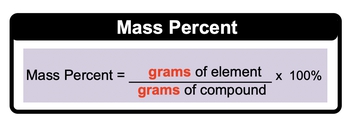Mass percent, often referred to as weight percent, quantifies the percentage of a specific element within a compound. This concept is closely tied to the molar mass, which is the mass in grams of the selected element relative to one mole of the compound. The formula for calculating mass percent can be expressed as:
\[\text{Mass Percent} = \left( \frac{\text{Mass of Element}}{\text{Mass of Compound}} \right) \times 100\]
By applying this formula, one can effectively determine the percent composition of any particular element in a compound. Understanding mass percent is crucial for various applications in chemistry, including stoichiometry, where it aids in the analysis of chemical reactions and the formulation of compounds.


